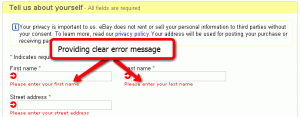by Aaron Baar, Staff Writer, November 1, 2016
For all the attention we give mobile in this age of do anything, anywhere, anytime, we sometimes forget that the device in our hand is — in addition to being a Web browser, game center, social network checker and e-mail device — also a telephone.
While search marketers are justifiably focused on getting search traffic to their Web site, e-commerce shops and, through mobile, to physical locations, we shouldn’t overlook the simple customer-service phone call. According to BIA/Kelsey, click-to-call commerce influences more than $1 trillion in consumer spending, and that click-to-call ad spending will reach nearly $6 billion this year. The firm also predicts nearly 170 billion mobile calls to businesses by 2020, driven heavily by the ability to click-to-call from a search ad or email.
Click-to-call is particularly effective for highly considered purchases. For all the information available on the Internet, 60% of car insurance consumers are likely to click-to-call from their mobile devices while shopping, according to advertising analytics firm Marchex. Of those who call, nearly three quarters show an intent to purchase.
Perhaps because of all this, click-to-call capabilities are increasing. Google earlier this year began testing click-to-call via organic searches, and the company is reportedly looking into expanding its click-to-text capabilities soon, having shown off its success working with Kia on the technology. (Indeed, this capability is so enticing, we should change our reference to “click-to-contact.”)
Yet there is one glaring weak spot in all of this click-to-contact technology, and that’s on the receiving end. Marchex’s insurance study indicated half of the calls made from click-to-call were abandoned because local agents didn’t pick up the phone fast enough. In a separate, earlier report, the company estimated that 10-20% of search spend by auto dealers is wasted because of unanswered phone calls.
While automation can handle some of these issues, it’s not a panacea. Marchex found a full two-thirds of the insurance industry’s abandonment happened during the “interactive voice response” portion of the call (a.k.a. the part where you have to press buttons to be routed to the right place). “An overly complicated IVR can frustrate callers, which can ultimately causes them to abandon,” reads the report. “Although some of these abandons during the IVR may be due to misdials, it’s likely that many of these IVR abandons were the result of an irritated customer.”
Similarly, automated chat bots can provide quick, generic answers to a text message, but are unlikely to answer a consumer’s specific question or issue. In this age of immediate gratification, consumers are looking for answers to their questions right now.
Ultimately, the success of a click-to-call program is going to come down to having an effective, efficient and well-trained call center staff: one that can quickly identify a consumer’s issue and resolve it quickly, before he or she moves on to the next company. As click-to-contact becomes more ubiquitous, it’s important to start training that staff now.
MediaPost.com: Search Marketing Daily
(52)
Report Post




